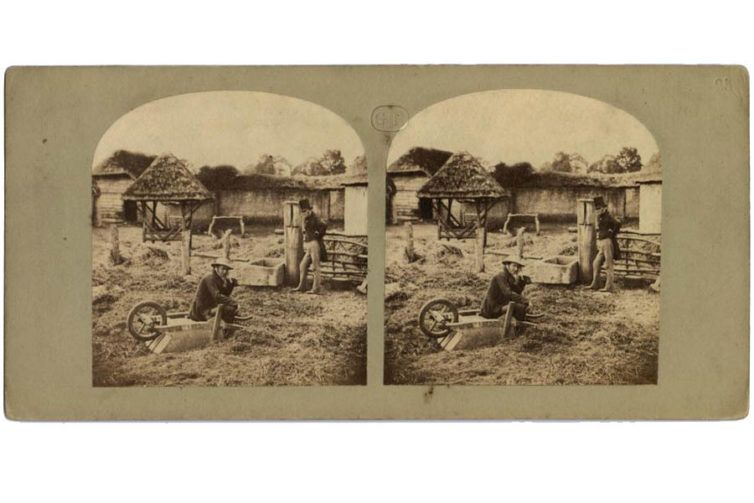Home / Creative Arts & Media / Stereoscopy: An Introduction to Victorian Stereo Photography / Now that at length our harvest work is done
This article is from the free online
Stereoscopy: An Introduction to Victorian Stereo Photography


Reach your personal and professional goals
Unlock access to hundreds of expert online courses and degrees from top universities and educators to gain accredited qualifications and professional CV-building certificates.
Join over 18 million learners to launch, switch or build upon your career, all at your own pace, across a wide range of topic areas.


 Image: Stereograph of Lunar photography, positive glass stereograph, by Warren de la Rue, published by Smith, Beck and Beck, London, 1858 IL.2003.44.7.290 © Howarth-Loomes Collection at National Museums Scotland
Image: Stereograph of Lunar photography, positive glass stereograph, by Warren de la Rue, published by Smith, Beck and Beck, London, 1858 IL.2003.44.7.290 © Howarth-Loomes Collection at National Museums Scotland
 Image: Stereograph of Lunar photography, positive glass stereograph, by Warren de la Rue, published by Smith, Beck and Beck, London, 1858 IL.2003.44.7.369 © Howarth-Loomes Collection at National Museums Scotland
Image: Stereograph of Lunar photography, positive glass stereograph, by Warren de la Rue, published by Smith, Beck and Beck, London, 1858 IL.2003.44.7.369 © Howarth-Loomes Collection at National Museums Scotland






